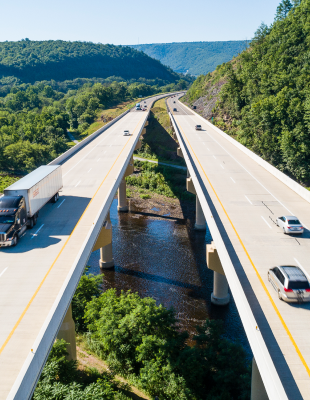Table of Contents
The challenge
North American cities lack digital curbside inventories, causing uninformed management and inefficient usage of the curbside.
90%
Over the last decade, curbside demand has significantly increased, with delivery services and transportation options, such as Uber, Lyft and bike-share programs all vying for a place. Public agencies struggle to manage curb space due to a lack of adequate data on how the curbside is being used, which is further compounded by the fact that curb regulations are not widely publicized.
Creating a comprehensive inventory of curb regulations is, therefore, a necessary precursor to informed curb management, with two major obstacles preventing public agencies from creating such an inventory being time and cost.
The solution
We leveraged CurbIQ’s mobile mapping solution to create a scalable way to collect a digital curb inventory of Los Angeles’ curbside.
83 miles
In collaboration with LA-based non-profit Urban Movement Labs, CurbIQ piloted a lightweight version of its augmented mobile mapping (AMM) solution. Mobile mapping is the surveying process wherein surveyors collect street-level data using one or more cameras attached to a vehicle. In place of CurbIQ’s typical high-end AMM cameras and processing software, this lightweight approach uses a smartphone to collect imagery. The lightweight process was piloted as a more economical alternative to CurbIQ’s typical AMM process for cities with smaller budgets in mind.
The study was completed in the Los Angeles neighborhoods of Hollywood, South Park, Warner Center, and in the neighboring city of Maywood. Over the course of six months, CurbIQ surveyed the target areas using lightweight AMM, as well as pedestrian surveying as a reference point.
-
Read more
The imagery captured at street level via surveyors was input into CurbIQ’s AMM technology to extract curb regulations and assets. The data informed the creation of a digital inventory that contextualized the curbside in each of the four areas. The digital inventory includes data such as the location of temporary parking, bylaw regulations, and the information and location of roadside signage.
The study’s findings showed that this lightweight AMM solution maintains the efficiency gains of standard AMM; the lighter approach can survey an area in up to one-eighth of the time it takes to map by foot. The study also found that the reduced cost of the lower-tech solution corresponds to a drop in accuracy and precision; whereas CurbIQ’s typical AMM process can accurately position assets in space within one foot, the lightweight approach shows a positioning accuracy of up to one car length (about 10 yards). The accuracy and precision are higher in lower-density neighborhoods.
The study validated this lightweight AMM solution as a useful tool for cities that are looking to create a curb layer on a budget and do not require exceptionally high precision. CurbIQ recommends that cities looking for such a survey utilize the lightweight AMM approach in low- to mid-density areas, and Curb-Level surveying in high-density areas. This blended approach offers a good balance of affordability and efficiency.
The impact
Our solution enables cities to create a digital inventory of their curbs, publish parking maps, improve enforcement, and optimize curb space usage.
Through our blended lightweight mapping process, cities can leverage the data to make informed decisions on how the curbside should be adapted to better meet the needs of the citizens in their area. In practice, this means drivers will have access to an open-source digital map of their area, informing them where it is safe to park, and the regulations associated with those areas.
City officials can use the information related to parking revenue, delivery access, curbside usage and accessible parking data to evaluate the impact of large-scale street redesign projects. Such information could inform bus rapid transit routes and schedules or the creation of bike lanes with the intention of tailoring public services to better serve the public.
Not done reading?
This also might be interesting for you
- Related Projects
- Related Insights
- Related Blogs









